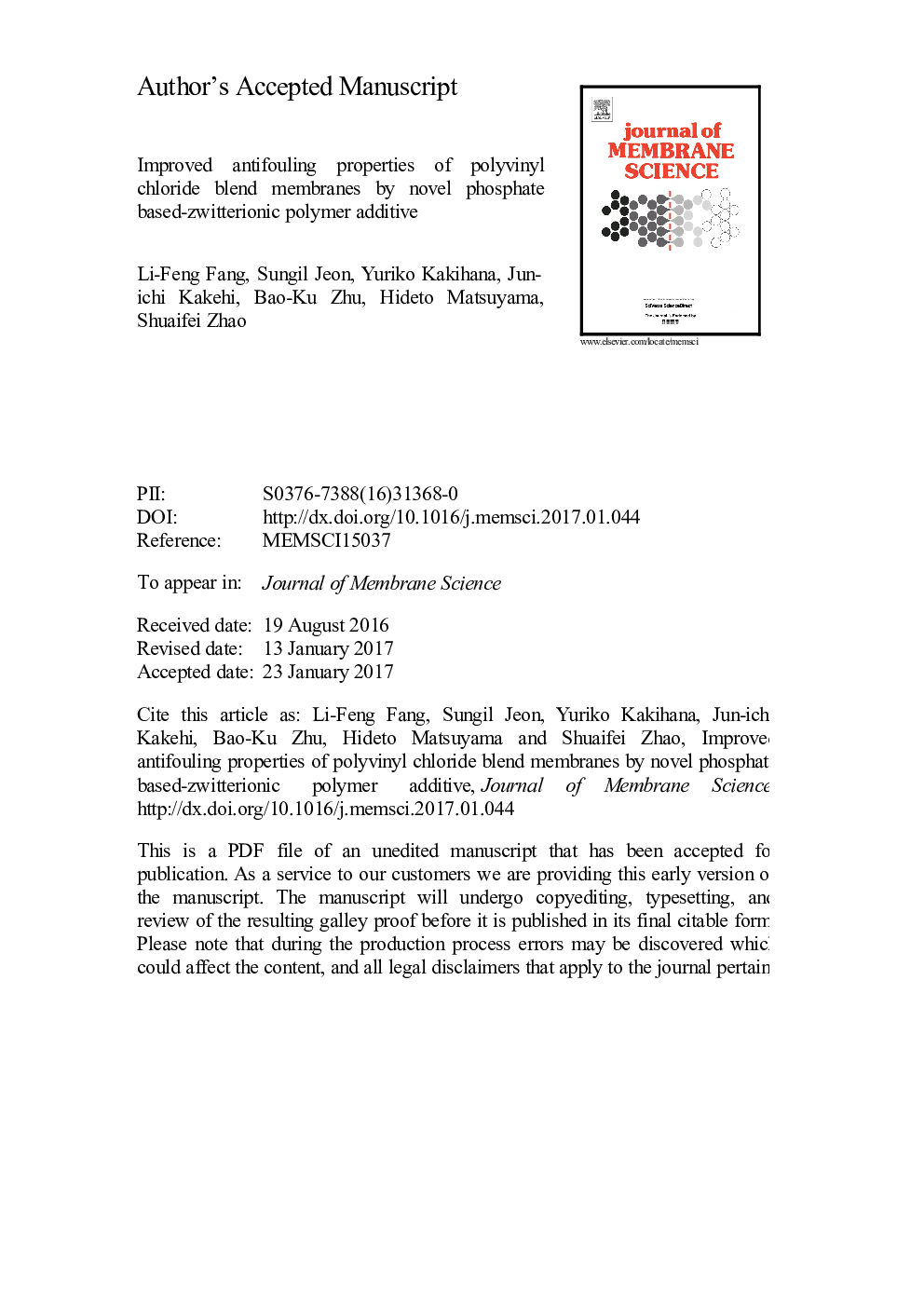| Article ID | Journal | Published Year | Pages | File Type |
|---|---|---|---|---|
| 4989175 | Journal of Membrane Science | 2017 | 41 Pages |
Abstract
To improve the antifouling properties of polymer membranes, a novel phosphate-based zwitterionic polymer (methacryloyloxyethylphosphorylcholine-co-poly(propylene glycol) methacrylate, i.e., MPC-PPGMA) is introduced into the polyvinyl chloride (PVC) membrane matrix. The solubility of this zwitterionic copolymer in common organic solvents and the compatibility between this copolymer and PVC are studied. A series of PVC blend membranes are prepared via non-solvent induced phase separation based on the good compatibility of the copolymer with PVC. Surface chemical compositions, wettability and porous structures of the membranes are characterized. Fluorescence-labeled proteins static adsorption and organic foulant filtration are conducted to evaluate the fouling resistance of the blend membranes. Antibiofouling properties of the membranes are also confirmed by the immersing method. Doping MPC-PPGMA in the casting solution can significantly improve the surface hydrophilicity and antifouling properties of the PVC blend membranes due to the strong hydration ability of the zwitterionic segments. The blend membranes show excellent and stable resistance to both organic fouling and biofouling. Overall, the novel zwitterionic copolymer MPC-PPGMA is a promising candidate to develop antifouling blend membranes due to its high effectiveness and long-term stability in the membranes.
Related Topics
Physical Sciences and Engineering
Chemical Engineering
Filtration and Separation
Authors
Li-Feng Fang, Sungil Jeon, Yuriko Kakihana, Jun-ichi Kakehi, Bao-Ku Zhu, Hideto Matsuyama, Shuaifei Zhao,
